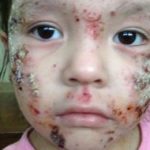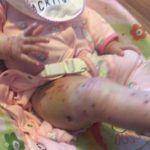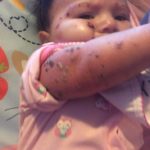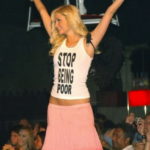Part One: Dirty Water
As of January 1, 2016, there were 135 drinking water advisories in effect in First Nations communities (that is to say, on “Indian Reservations”), across Canada. This is excluding British Columbia, where another 26 drinking water advisories were in effect as of February 29, 2016. If you actually read through the advisories, you’ll notice that many have been in effect since the mid-1990s and have no sign of not being in effect any time soon. Altogether, over 109 communities are impacted. It’s hard to know the exact figures because many communities do not have a population listed but, based upon the information available, we can estimate that this impacts over 75,000 people. Over 75,000 Indigenous people living in conditions of poverty we tend to associate with some of the poorest nations in the two-thirds world — we are talking about people who lack buildings with heat or insulation (despite living near the arctic), who lack running water, and who cannot drink or bathe in the water that is available to them.
If they do bathe in or drink the water, this can happen:
This is in Ontario, the province where I reside. Extreme poverty conditions, dirty water and all the sickness it brings, have been a part of First Nations communities ever since we came and colonized this land and decided what gets to count as a First Nations community and what gets to count as ours. This has been the way of things since our predecessors hunted Indigenous people for sport and for money, ever since our Founding Fathers (like John A. MacDonald) starved them into leaving their lands and moving to reserves, and ever since we robbed them — not only of life and land, but of money that is owed to them up until the present day.
(By the way, the term, “First Nations communities,” is just the friendlier gloss over the Reserve system that Canada established to drive Indigenous people from their territories into small, often very hard-to-live-on, sections of land [many reserves today still bear the brunt of the rapacious industrial practices Canadian industry — places like Aamjiwnaang or the Athabasca Chipewyan First Nation]. For many years, Indigenous people needed to get a Pass approved by the “Indian Agent” in order to leave the Reserve and could be jailed for leaving without permission. Representatives from the Third Reich and Apartheid in South Africa studied the Reserve system and used it to develop their own concentration camps and ghettos.)
Now here’s the thing: when responding to this kind of crisis (if we bother responding at all, which we usually don’t… I mean, some of these water advisories have been in effect for over 20 years), of course you want to treat the symptoms and help people to get healthy again, but in order to make sure that they don’t get sick again, you have to make sure that the water they have is clean and clear and fit for use in baths and for drinking. To do anything less than that is beyond irresponsible — it’s downright cruel and oppressive and, from the perspective of healthcare, it’s probably certifiably insane.
To simply treat a rash, and then return people to water that is dirty (and often poisoned by industry in conjunction with the colonial government of Canada), is akin to treating people with plague symptoms without trying to stamp out the source of the plague.
Hold that last thought — I almost said it’s like trying to get rid of the plague without getting rid of the rats who carried the plague, but it turns out gerbils — and possibly camels — were more likely responsible for the Black Death.

Also, surprise surprise, gerbils (and camels?) were only responsible because the greed of the 1% was creating a market for importing exotic goods. And this leads directly to my next point.
Part Two: Dirty Money
In recent years, there has been a push to understand poverty through the discourse of healthcare. People talk about extreme poverty as an “epidemic” and they speak of doing things like “curing” homelessness. However, what is missing in all of this, is a thoroughgoing analysis that traces the epidemic back to its source. In other words, a lot of this health-based poverty talk is really just dealing with symptoms but not addressing root problems. Focusing on treating people who are sick from poverty will no more eradicate poverty than focusing on treating people who are sick from dirty water will eradicate dirty drinking water.
Of course, as I (and others) have argued extensively elsewhere, the rise of the discourse of public or community health in relation to things like poverty and oppression is convenient, in part, because it focuses so heavily on symptoms. By doing so, it tends to depoliticize poverty. It takes things like justice and oppression further from the public eye and focuses, instead, on public health outcomes, especially in relation to those who are understood to be sick. So people treat the symptoms of those who are stuck drinking dirty water, but they don’t bother making sure the water is treated or the source is cleaned.
What we begin to realize, if we do some digging (as I’ve done and tried to help others to do with the various links in this post), is that some people really have a vested interest in keeping the water dirty. It’s more profitable and money — no matter how dirty — tends to matter a lot more than the lives of people.
So what are we told is the solution? Well, since it’s people who are experiencing poverty who are taken to be sick (or, one step further, are taken to be the sickness within our community), then Paris Hilton is right. The solution is to…
The issue with Paris Hilton and the assholes from Rich Kids of Instagram isn’t that they’re deluded or blinded by wealth — they’re simply more honest about what’s going on because, hey, why should they give a fuck about what 99% of people think?
But here’s the catch: if we truly do examine poverty as an epidemic and don’t just simply treat symptoms, and if we genuinely hope to “cure” it, then we’ve got to get to the source of the problem. What is the source? Quite simply, the hoarding of wealth is the source of the epidemic of poverty. It is the rich who are the rats gerbils (or maybe camels?) ensuring the ongoing spread of this plague. Given the racialized, settler colonial nature of this disease, we could probably refer to poverty as the White Death (in contrast to the bubonic plague which was called the Black Death).
Now, let me be clear, I’m not suggesting that we now all go out and eat the rich.

What I am saying is that if we are to meaningfully respond to poverty then rich people cannot survive as rich people. Consequently, while continuing to treat symptoms of poverty as they manifest in various individuals and communities, what we really need to focus on doing is eradicating wealth. Until we do that, we’re doing little more than giving kids an antibiotic skin cream and then sending them back to drink dirty water.





With a lot of parallels, in Australia it is rheumatic heart disease.